Advertisements
Advertisements
प्रश्न
A student did an experiment with a convex lens. He put an object at different distances 25 cm, 30 cm, 40 cm, 60 cm and 120 cm from the lens. In each case he measured the distance of the image from the lens. His results were 100 cm, 24 cm, 60 cm, 30 cm and 40 cm, respectively. Unfortunately his results are written in wrong order.
Which of the object distances gives the biggest image?
उत्तर
The object distance of 25 gives the biggest image because at this position, the object is between f and 2f . We know that when an object is placed between f and 2f of a convex lens, we get a real, inverted and magnified image.
APPEARS IN
संबंधित प्रश्न
An object of height 2.5 cm is placed at a distance of 15 cm from the optical centre 'O' of a convex lens of focal length 10 cm. Draw a ray diagram to find the position and size of the image formed. Mark optical 'O', principal focus F and height of the image on the diagram.
Where should an object be placed in front of a convex lens so as to obtain its real, inverted and magnified image?
Fill in the following blank with suitable word:
The image in a convex lens depends upon the distance of the ........... from the lens.
Which causes more bending (or more refraction) of light rays passing through it : a convex lens of long focal length or a convex lens of short focal length?
Which part causes the greatest convergence?
Study the diagram given below.
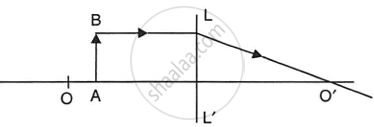
- Name the lens LL’.
- What are the points O and O’ called?
- Complete the diagram to form the image of the object AB.
- State the three characteristics of the image.
- Name a device in which this action of lens is used.
Analyse the following observation table showing variation of image-distance (v) with object-distance (u) in case of a convex lens and answer the questions that follow without doing any calculations:
| S. No. | Object-Distance u (cm) |
Image-Distance v (cm) |
| 1 | –60 | +12 |
| 2 | –30 | +15 |
| 3 | –20 | +20 |
| 4 | –15 | +30 |
| 5 | –12 | +60 |
| 6 | –9 | +90 |
(a) What is the focal length of the convex lens? State reason for your answer.
(b) For what object-distance (u) is the corresponding image-distance (v) not correct? How did you arrive at this conclusion?
(c) Choose an appropriate scale to draw a ray diagram for the observation at S. No. 4 and find the approximate value of magnification.
When you focus the image of a distant flag, whose shape is given below, on a screen using a convex lens, the shape of the image as it appears on the screen is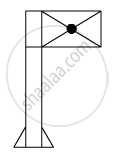
(A)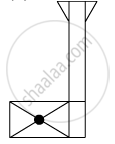
(B)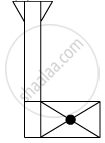
(C)
(D)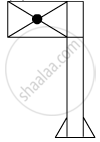
State the position of object, position of image, nature of image when: Convex lens is used as an erecting lens in terrestrial telescope.
_______ times larger images can be obtained by using a simple microscope.
